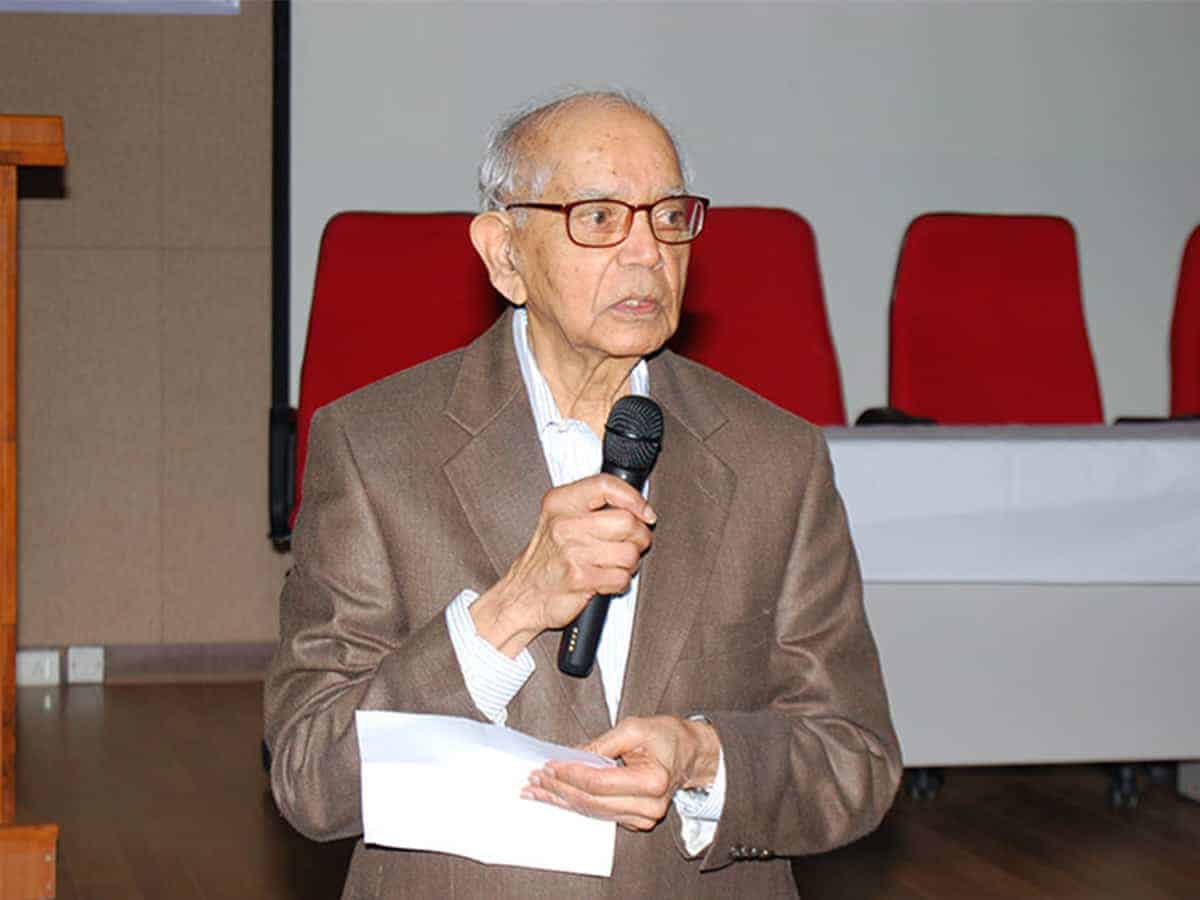Hyderabad: In a world that is standing at the cusp of an age of big data, analytics, machine learning, artificial intelligence and bioinformatics, contributions of Professor Calyampudi Ramesh Rao, or popularly C.R. Rao, assume great importance. The statistician, who is a centenarian today, along with popular ones like Egon Pearson, Ronald Fisher, Andrey Kolmogorov and Jerzy Neyman shaped the dramatic growth of mathematical statistics in the 20th century.
Former US President George Bush, while presenting to him the President’s medal in 2003, referred to Rao as “A Prophet of the new age.” He was conferred Padma Bhushan by the Indian Government in 1968, yet he remains widely unrecognized by the general public.
Statistics by chance
In his autobiography, Statistics as a Last Resort, Rao describes his entry into the field as a happening by chance.
The Telugu statistician was born on September 10, 1920, to C. D. Naidu and Laxmikanthamma. Most of his early education happened in Andhra Pradesh. He completed a BA (Honors) degree in Mathematics from Andhra University in Vishakhapatnam. After completing his B.A., Rao applied for a research scholarship in mathematics, but this application was turned down due to late submission; he then applied for a variety of jobs without success.
Destiny then took him to the nascent Indian Statistical Institute (ISI), established by the legendary Prasanta Chandra Mahalanobis, where he enrolled in a one-year training course in statistics. Later, Rao joined Calcutta University, which had just started a Master’s degree programme in statistics, the first of its kind in India. He completed the programme with first-class honors and a gold medal in 1943, and so was among the first five people to receive an M.A. degree in statistics from any Indian University.
By the age 22, Rao had already published seven technical papers in statistics. Mahalanobis, recognizing his potential, deputed him to Cambridge University in London in 1946 to assist anthropological data analysis. While he was at Cambridge, he registered for a doctoral degree under the guidance of the celebrated Professor Ronald Fisher. He returned to the ISI in 1948 as a Professor in Statistics.
A life in statistics
At ISI, Rao worked in various positions—Head of Research and Training School (RTS), Director of RTS, Director of ISI, Jawaharlal Nehru Professor and National Professor—over a period of 40 years and took mandatory retirement at the age of 60. During this time, he published 201 research papers.
As India started building its institutional infrastructure, Rao played a monumental role in providing the statistical framework. He was also instrumental in extending and strengthening their use through the formative stages of the Central Statistical Organisation (CSO) and the many state bureaus of statistics. Similarly, the creation and evolution of the NSSO, which is the backbone for generating data to plan economic growth, is owed to Dr Rao and his students.
Upon his retirement, he accepted positions of distinguished professorships in the U.S. which had minimal teaching responsibilities. He took an appointment as University Professor at the University of Pittsburgh for eight years and as Eberly Chair Professor of Statistics at Pennsylvania State University for 13 years, continuing his research in diverse areas of statistics. Over this close to the forty-year period after his retirement, Rao published another 274 papers!
Many results in statistical research bear his name, such as the Cramer-Rao lower bound, Rao-Blackwell theorem, Rao-Blackwellization, Fisher-Rao theorem, Rao’s second-order efficiency, and the Geary-Rao theorem on the Pitman closeness criterion. In 1946, Rao was the first one to effectively develop the popular econometric tool, Lagrange multiplier, which went unrecognized.
In 2009, Rao established in Hyderabad a research institute to promote mathematics, statistics and computer science, under the University of Hyderabad. In addition to liberally funding the venture, he also obtained generous grants from the Manmohan Singh government.
Other interests
When Rao was young, he was interested in music and other cultural activities, but his parents wanted him to concentrate on studies rather than on extracurricular activities that might distract him. However, he continued to pursue his cultural interests and became, for example, the president of the Kuchipudi Dance Academy in Delhi, 1970-1976. His daughter went to a dance school in Calcutta and now runs a dance school called Natya in Buffalo, New York. Rao is also well known for his accomplishments in photography, winning several prizes in competitions.
C.R Rao is currently a professor emeritus at the Pennsylvania State University and Research and a professor at the University of Buffalo. He married Bhargavi, who is a distinguished academician in Psychology. The couple has two children, Tejaswini and Veerendra.

